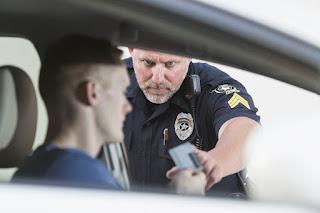
Traffic stops seem to be the most routine of all law-enforcement duties. But such stops are increasingly turning deadly, a new study shows, causing some jurisdictions to consider taking the enforcement of traffic laws out of the hands of police. From an e-newletter of The New York Times, which conducted the investigation:
Over the past five years, police officers have killed more than 400 drivers or passengers who were not wielding a gun or a knife, or who weren’t under pursuit for a violent crime — a rate of more than one a week, a Times investigation found.
Many were stopped for common traffic offenses: a broken taillight, running a red light orswerving across double yellow lines. Relative to the population, Black drivers were overrepresented among those killed.
What could be driving this alarming trend? One factor appears to be money:
Traffic stops — which can be driven by the demand for revenue to fund towns — are the most common interactions between police officers and the public. The police consider them among the most dangerous things they do.
Officers have been charged in 32 cases, and nearly two dozen are pending. Only five officers have been convicted of crimes for the killing of motorists. But The Times found that evidence often contradicted the officers’ accounts. A visual investigation rolled back the footage capturing 120 fatal traffic stops and found that in dozens of incidents, officers made tactical mistakes that put them in positions of danger.
In an opinion piece, aol.com suggests cops could be taken out of the traffic equation:
Traffic stops are the most common way Americans interact with the police. The Brooklyn Center, Minn., police killing of Daunte Wright, a 20-year-old Black man who was shot by an officer who allegedly confused her gun for her Taser while attempting to arrest him, is the latest reminder of how these interactions can quickly turn deadly.
Police conduct roughly 20 million traffic stops a year, according to data from the Stanford Open Policing Project. Though the majority end without major incident, they occasionally result in officers using deadly force. Last year, 121 people were killed by police after being stopped for a traffic violation. Several of the most controversial law enforcement-related deaths in recent years have resulted from traffic stops — including the shooting of Philando Castille in 2016, which occurred miles away from where Wright was killed.
Wright’s killing has also brought attention to so-called pretextual stops, a practice in which police use a minor violation — such as changing lanes without signaling or a broken taillight — as a pretext for investigating an unrelated crime. The Supreme Court has ruled that pretextual stops are constitutional, but critics say these stops fuel racial bias in policing. Researchers have found that Black drivers are 20 percent more likely to be pulled over and up to twice as likely to be searched even though they were “less likely to be carrying drugs, guns or other illegal contraband compared to their white peers.”
We have reported previously on pretext traffic stops. (See here, here, and here, Some good news: The law took a turn in a positive direction in 2015.)
Why there’s debate
Traffic stops, in theory, promote public safety by discouraging unsafe driving and providing police an opportunity to identify more serious crimes. But police reform advocates say the high number of killings and evidence of racial bias show that, in practice, the stops do far more harm than good. A number of potential solutions have been proposed to make traffic enforcement safer and less prone to abuse.
Where could this issue be headed. We have insight from aol.com:
Supporters of the movement to defund the police have called on local governments to establish separate traffic agencies staffed by unarmed monitors who would handle noncriminal traffic enforcement duties that currently fall under police purview. These agencies, proponents argue, could keep the streets safe from dangerous drivers while reducing the risk of violent incidents. Some reform advocates say less dramatic policy changes, such as ending pretextual stops and only pulling over those who commit the most dangerous violations, could greatly reduce the number of incidents that escalate to violence. Others say technologies like red-light cameras and speed cameras could take a large share of the human element out of traffic enforcement.
Skeptics warn against enacting widespread changes in response to what they see as a small number of high-profile incidents. They say pretextual stops, an element of what’s known as proactive policing, help police keep drugs and guns off the streets. Others say traffic enforcers would face substantial danger while conducting traffic stops without a means to defend themselves. There are also fears that cameras would be prone to mistakes and contribute to a worrisome level of government surveillance.
